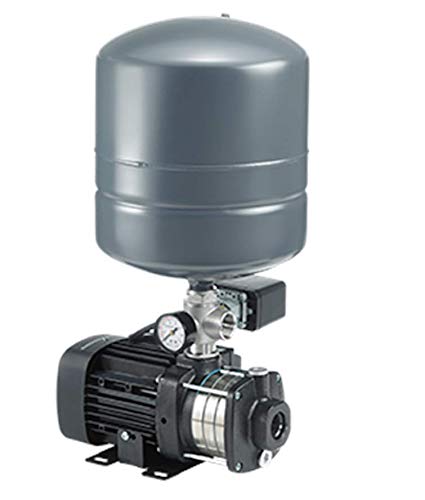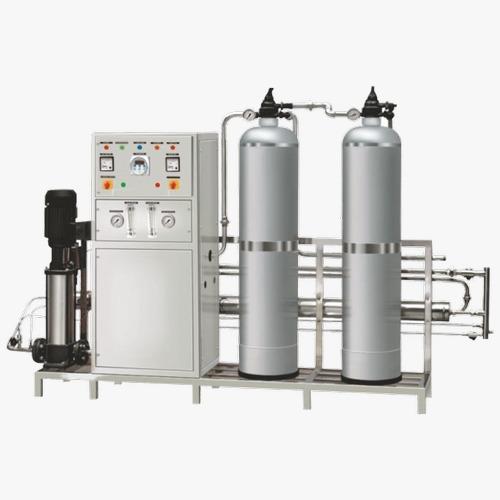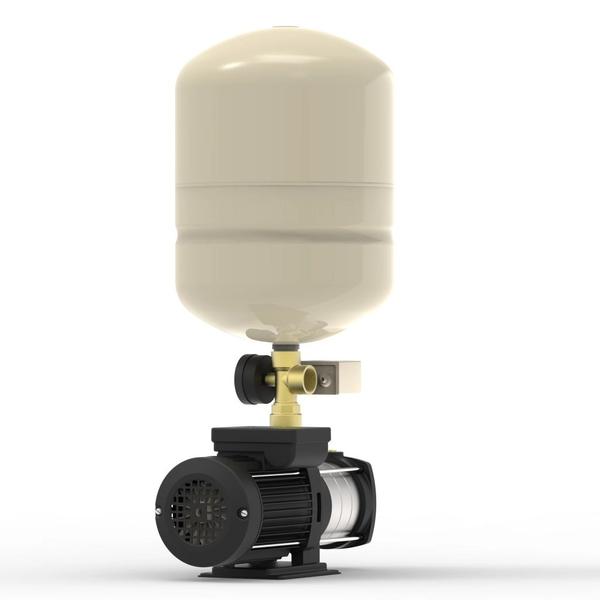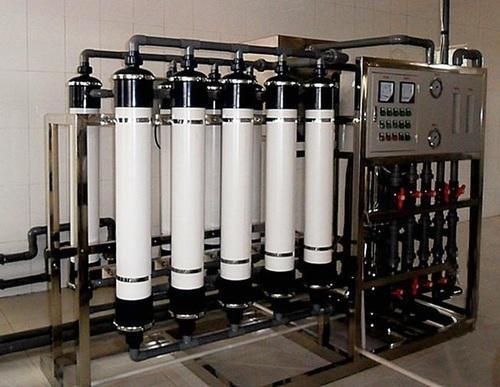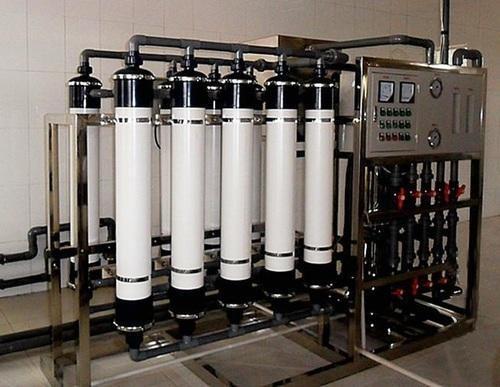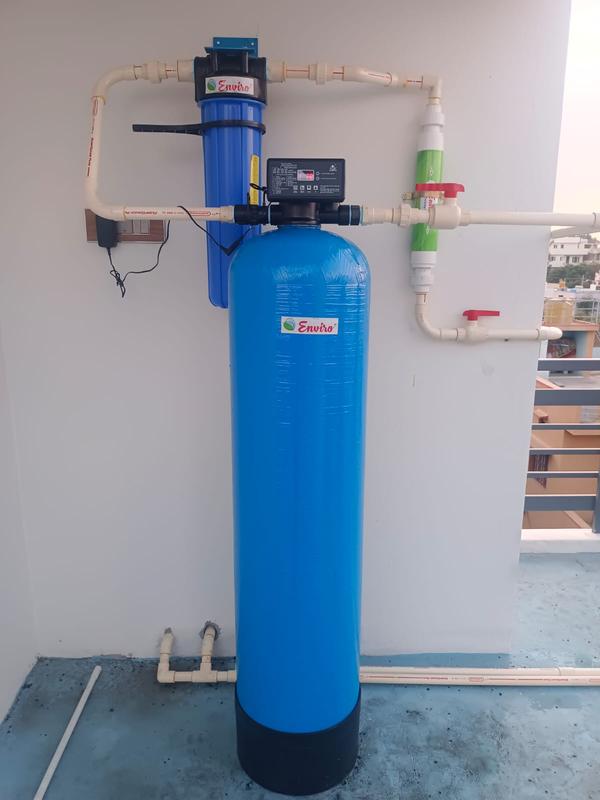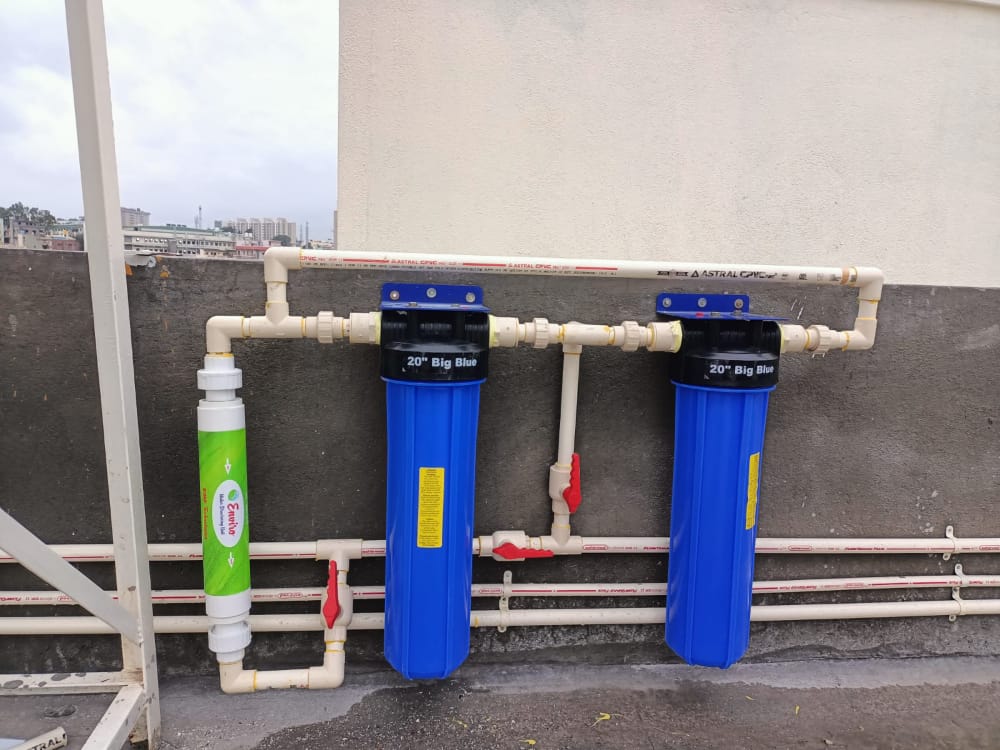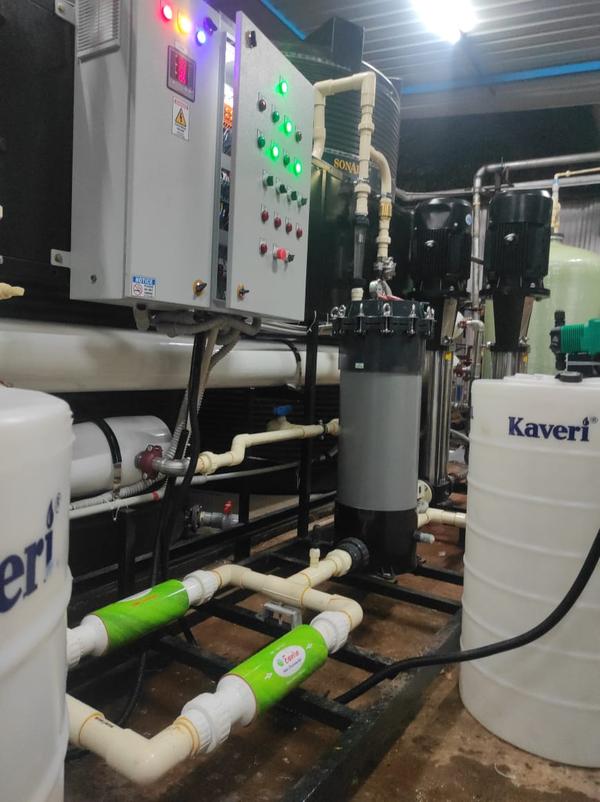CMB3-46PT is the perfect choice for 3-4 outlets Boosting from mains: Increases the water pressure delivered by city mains Boosting from tanks: Increases water pressure from roof tanks, break tanks and ground tanks, including rainwater tanks. Highlights: Perfect water pressure: Intelligent pump control adjusts operation automatically Easy selection: One variant for all domestic boosting needs Easy installation: Compact, all-in-one solution, plug-and-pump, installation service available by Grundfos certified installer Easy to operate: User-friendly control panel Quiet operation - Low noise operation Grundfos pump with automatic start stop system Dry running protection - Auto start when using water, auto stop when not using water 2.5 Years warranty - 2 years manufacturer warranty by Grundfos India, extra 6 months warranty if you buy from us Quality Assurance: Each CMB-PT is factory assembled and tested before delivery Long lifetime: Major pump components are manufactured from corrosion and wear resistant stainless steel. Suitable for 3-4 outlets NEW INSTALLATION: One stop centre - We prioritize our installation add-on service to our customers who also purchase Grundfos water pumps from us Guaranteed after sales service - 2.6 years warranty for Grundfos water pump Trustworthy and reliable - Installation by Grundfos water pump certified installer Piping from water tank to water pump is included Long lasting material used - By default we use PVC pipe & fittings for water pump installation, however mostly our professional installer had to adjust to client existing piping system depending on situation AND EXTRA CHARGES NEEDED BECAUSE DIFFERENT BASIC MATERIALS. Trustworthy and reliable - Installation by Grundfos water pump certified installer (Wiring) House plumbing & power point for water pump to be ready by client before installation. If client requires us to do wiring service, it can be arranged but with extra charges.
Send Message